
So I had a class at Disney University today entitle "Walt Disney & You" and I have to say it has been the best class by far!! I love learning about our traditions and heritage. I get all teary eyed watching the clips and listening to the audio... if I could have one wish, it would be to go for a stroll down Main Street with Walt.
This is the best book you will ever find on him and one of the few we actually sell on property. The write up for it is "Walt Disney is an American hero--the creator of Mickey Mouse, and a man who changed the face of American culture. After years of research, with the full cooperation of the Disney family and access to private papers and letters, Bob Thomas produced the definitive biography of the man behind the legend--the unschooled cartoonist from Kansas City who went bankrupt on his first movie venture but became the genius who produced unmatched works of animation. Complete with a rare collection of photographs, Bob Thomas' biography is a fascinating and inspirational work that captures the spirit of Walt Disney." This came from Alibris website since all the others have it where you can have some odd "preview" that doesn't really work and won't give a proper synapsis.
I copied a write up of his history from The Museum of Broadcast Communications so you can see for yourself. If you would like one, just let me know and I'll mail one to you... I think everyone should read it and instill the principles of Disney in their life....
Walt Disney was a visionary filmmaker who brought his film library, his love of technology, and his business sense to American television in the mid-1950s. His ground-breaking television program, Disneyland, helped establish fledgling network ABC, pointed the way toward that network's increasing reliance on Hollywood-originated filmed programming, and provided much needed financing for Disney's pioneering theme park.
Since the late 1920s, Disney had been a public figure, Hollywood's best known independent studio head. He had first achieved success with animated short subjects starring the character with whom he is best associated, Mickey Mouse. In 1937, his studio had produced the first full-length animated motion picture, Snow White and the Seven Dwarfs. In the late 1940s, beginning with Song of the South (1946), the Disney studio had also branched out into live-action films, but it was primarily associated, then as now, with animation.
Unlike many other studios, Disney's had not prospered during World War II, when it had devoted much of its energies to producing films for the U.S. government. Indeed, the Disney studio had never made a great deal of money because of the time- and labor-intensive nature of animation work. After the war, Disney hoped to expand his enterprises. The key to this expansion, according to Christopher Anderson in Hollywood TV (1994), was diversification. Disney was ready to set his sights beyond the film industry.
Disney flirted with the new medium in the early 1950s, producing a one-hour special for NBC in 1950 and another in 1951. He discussed a possible series with both NBC and CBS, but only third-place network ABC was willing to give him what he wanted in exchange--funding for the amusement park he dreamed of opening in Anaheim, California. ABC executives were desperate to obtain programming that would enable them to compete with their more established rivals and were particularly interested in courting the growing family market in those baby-boom years.
Walt Disney and his brother Roy convinced the network to put up $500,000 toward the construction costs for the park, to be called (like the television program) Disneyland, and to guarantee its bank loans. In exchange, ABC would obtain 35% of the park and would receive profits from Disneyland concessions for ten years. Even more importantly to the network, Disney would deliver them a weekly, hour-long television program that would take advantage of his family-oriented film library.
The program Disneyland debuted on 27 October 1954, and quickly became ABC's first series to hit the top ten in ratings. A number of early episodes showed old Disney films or promoted new ones. (A documentary chronicling the filming of the upcoming 20,000 Leagues Under the Sea added to the audience for that film and also earned Disney his first Emmy award, for best documentary.)
The program's success was clinched in December 1954 with the introduction of the first of three episodes focusing on Davy Crockett. The day after the 15 December telecast of "Davy Crockett, Indian Fighter," Crockett mania swept through the country.
The "Davy Crockett" episodes established another new Disney tradition. Not only would Disney move his feature films to television; he would also reverse the process. Although ABC broadcast only in black and white, the Disney studio shot the Davy Crockett episodes in Technicolor. After telecasting each of the three hours twice during the winter and spring months of 1954-55, the studio edited them into a film, which it released to theaters nationally and internationally in the summer of 1955. The film's high attendance increased the visibility of the Disneyland television program--and of all Disney's enterprises, including his new park.
When the park opened in July of 1955, ABC aired a live special honoring America's new tourist mecca and its founder. Within a year, millions of viewers whose amusement appetites had been whetted by Disney's television program poured into Disneyland. In its first year, it grossed $10 million. Walt Disney and his company had shaped two new entertainment forms--and had made more money than ever before.
Disney himself served as the affable host of his program. In light of its success, his studio quickly generated other youth-oriented television shows for ABC. The Mickey Mouse Club, a daily daytime program featuring a likable group of youngsters known as the Mouseketeers, premiered a year after Disneyland and lasted for four seasons. Zorro, an adventure series about a masked, swashbuckling Spaniard in 19th-century California, ran from 1957 to 1959.
Disney continued to be best known, however, for the weekly program he hosted. In 1959, this show changed its name to Walt Disney Presents. In 1961, it moved to NBC and changed its name to Walt Disney's Wonderful World of Color. NBC's parent company, RCA, offered the Disney studios an appealing sponsorship deal, hoping that Disney's colorful telefilms would help market color television receivers.
Disney was still the host of this version of the program at the time of his death in December 1966. His avuncular on-screen personality had endeared him to viewers of all ages. And his re-creation of American recreation through the dual marketing of the two Disneylands had forged new patterns in American cultural history, inextricably linking television to the film and amusement industries.
-Tinky "Dakota" Weisblat

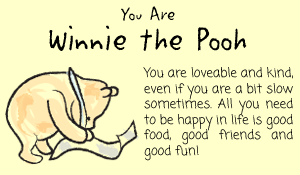
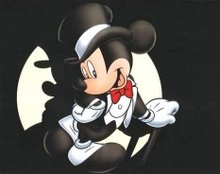
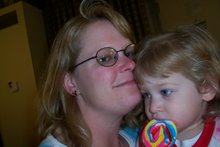
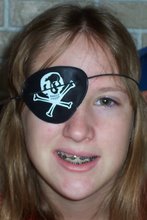
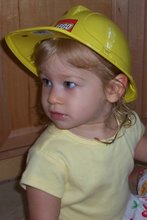
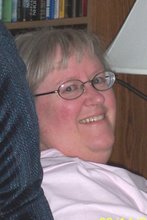
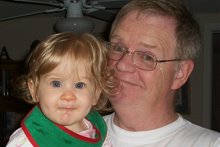
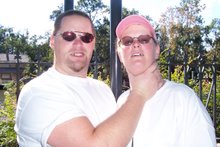
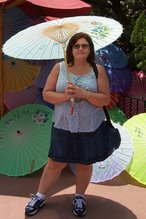
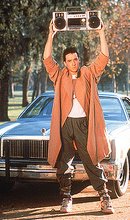


No comments:
Post a Comment